Kuju volcano study maps permeable windows for supercritical geothermal
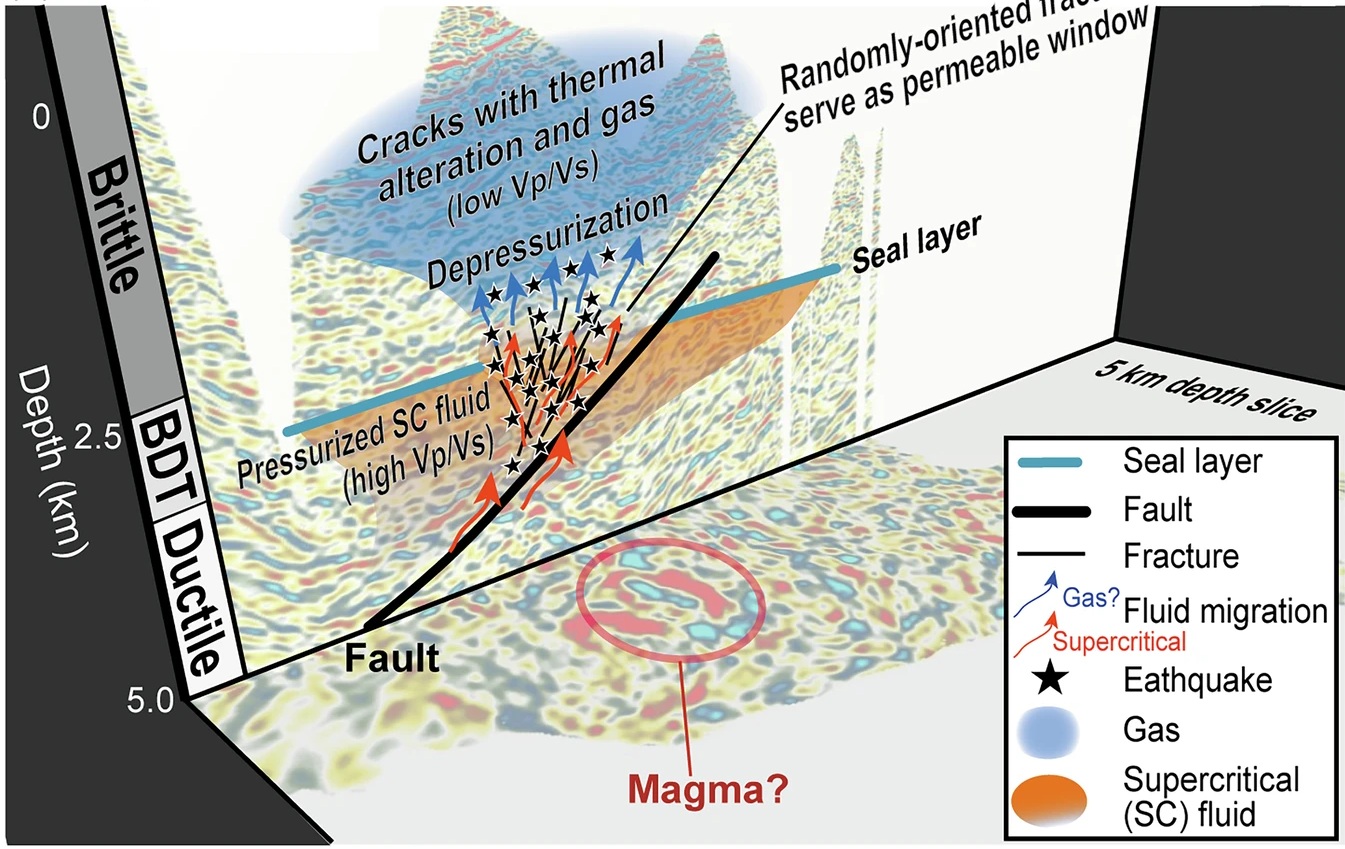
A recent study published in Communications Earth & Environment presents high-resolution seismic evidence of supercritical fluid pathways near the volcanic brittle–ductile transition (BDT) beneath Kuju volcano, Japan.
Researchers conducted a 3D active-source multichannel seismic survey over a ~20 × 10 km portion of the Kuju geothermal field, deploying three vibroseis sources and 1,270 geophone receivers along accessible road corridors in a mountainous terrain. The team applied an extended common-reflection-surface (CRS) method to overcome the challenge of limited source–receiver geometry and to enhance subsurface imaging where deployment is constrained.
The seismic results delineate a high-amplitude reflection zone (HARZ) spanning depths of roughly 3 to 6 km beneath sea level (4 to 7 km below ground). Below that zone, a continuous horizontal reflector was interpreted as a seal layer, possibly acting as an impermeable barrier confining high-pressure fluids. The imaging reveals that fractures or faults intersect portions of that seal layer, forming a low-amplitude reflection zone (LARZ) interpreted as a permeable window through which fluids may migrate upward.
Beneath the permeable window, the survey identifies a plume-shaped anomaly marked by extremely low P-wave to S-wave velocity ratio (Vp/Vs < 1.4), located between approximately 2 and 3 km depth below sea level. The low Vp/Vs is consistent with a crack-dominated formation, possibly thermally altered and containing gas extracted from phase transition of ascending supercritical fluid.
A dense seismic network of 47 stations allowed the researchers to locate 694 earthquake hypocenters and compute focal mechanisms during May to July 2022. Earthquake clusters are concentrated near the western margin of the HARZ and above the permeable window, regions where the seal appears disrupted. The focal mechanisms show a diverse mix of faulting styles, consistent with rupture across a fracture network.
Temporal analysis reveals a correlation between rainfall events and subsequent seismicity. The authors found a time lag of about 9 days between precipitation peaks and increased earthquake occurrence in May–December 2024, which suggests that elevated pore pressure from infiltrating water may perturb near-seal pressure conditions and trigger fault slip via fluid migration.
Using temperature logs from the DY-5 well (depth ~3,000 m where temperature ~260 °C, gradient ~15 °C per 100 m), the authors infer that fluid beneath the horizontal reflector likely exceeds ~335 °C, consistent with supercritical conditions (i.e. > 374 °C and > 22 MPa pressure). The depth of the horizontal reflector aligns with typical BDT depth, indicating the seal lies near the transition zone, separating ductile deeper regions from brittle overlying zones.
The study interprets the geological architecture as follows: a deeper zone of pressurized supercritical fluid is capped by a self-sealing or precipitated seal layer; fluid pressure builds until it exploits fractures or faults to breach through into the overlying brittle crust via the permeable window; upward migration of fluid triggers phase transitions (supercritical to gas or liquid), reduces local normal stress, and induces earthquakes in the fracture zone.
The authors suggest that this combined seismic and seismicity-based imaging approach may help identify drilling targets for next-generation supercritical geothermal systems in mountainous volcanic regions, particularly where direct access is limited.
Source: Communications Earth & Environment
Want to read more like this story?

Drilling deeper: New Zealand explores supercritical geothermal
Oct, 15, 2025 | NewsNew Zealand’s government has allocated NZ$60 million to accelerate exploration of supercritical geo...
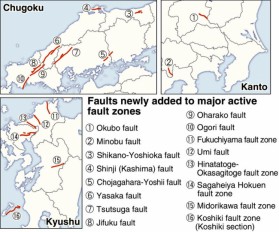
Sixteen new locations listed as major active fault zones in Japan
Mar, 06, 2017 | NewsThe total number of major active faults in the country has now increased to 113, as the Headquarters...
Geothermal energy spots: Scientists are planning a 'CAT scan' of a B.C. volcano
Sep, 01, 2022 | NewsScientists are planning a “CAT scan” of a British Columbia volcano to help harness the underground...
Changes in magnetic field along fault lines preceded major earthquakes in California according to a recent case-study
Oct, 20, 2022 | NewsResearchers have tried for decades to determine whether there is a reliable precursor that can act...
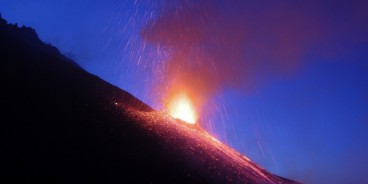
Deeper source of volcanic eruptions discovered
Jun, 11, 2019 | NewsA volcanic source in large depth beneath the Earth's surface that used to be undisclosed w...
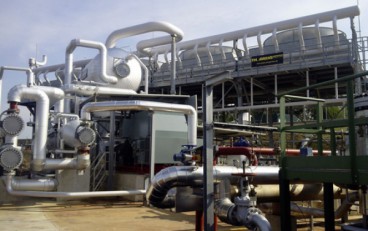
This geothermal power plant in France takes advantage of heat tapped in deep rock, supplying electricity to 3,000 households
Oct, 17, 2017 | NewsThe site was formerly used as a research facility The site was formerly used as a research facility...
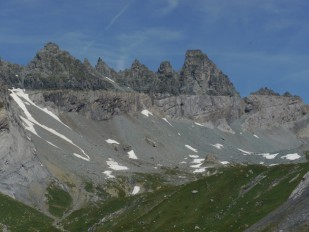
Fluid viscosity impact on earthquake's intensity
Apr, 02, 2019 | NewsAccording to a research conducted by a PhD candidate at EPFL, the viscosity of fluids affects the in...
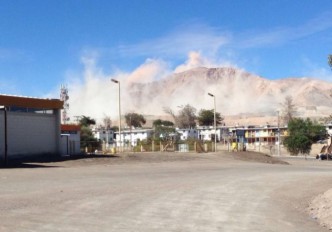
Earthquake in Chile Triggers Landslides Causing Dust Clouds
Aug, 11, 2016 | NewsA 6.1 earthquake was measured in the Atacama Desert near Diego de Almagro, Chile on July 25th. Accor...
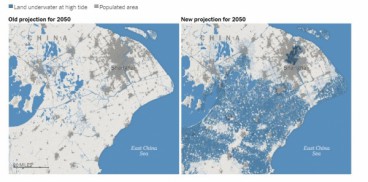
New study suggests sea level rise will be much worse than anticipated
Nov, 18, 2019 | NewsNew evidence suggest that sea water level will rise much faster than anticipated and will soon affec...
Trending

Vertical gardens in Mexico City to combat pollution

Saudi Park Closed After 360 Big Pendulum Ride Crashes to Ground, 23 injured

Characteristics of Load Bearing Masonry Construction

Taipei 101’s impressive tuned mass damper

Dutch greenhouses have revolutionized modern farming

Federal court rules Biden’s offshore drilling ban unlawful


